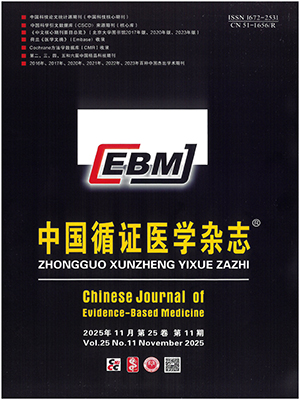| 1. |
Donovan NJ, Kendall DL, Heaton SC, et al. Conceptualizing functional cognition in stroke. Neurorehabil Neural Repair, 2008, 22(2): 122-135.
|
| 2. |
Nys GM, van Zandvoort MJ, de Kort PL, et al. Cognitive disorders in acute stroke: prevalence and clinical determinants. Cerebrovasc Dis, 2007, 23(5-6): 408-416.
|
| 3. |
中國醫師協會神經內科分會認知障礙專業委員會, 《中國血管性認知障礙診治指南》編寫組. 2019年中國血管性認知障礙診治指南. 中華醫學雜志, 2019, 99(35): 2737-2744.
|
| 4. |
Crescentini C, Seyed-Allaei S, Vallesi A, et al. Two networks involved in producing and realizing plans. Neuropsychologia, 2012, 50(7): 1521-1535.
|
| 5. |
Miller HL, Bugnariu NL. Level of immersion in virtual environments impacts the ability to assess and teach social skills in autism spectrum disorder. Cyberpsychol Behav Soc Netw, 2016, 19(4): 246-256.
|
| 6. |
Pareto L, Sharkey P, Merrick J. Using virtual reality technologies to support everyday rehabilitation. J Pain Manage, 2016, 9: 197-198.
|
| 7. |
Wiley E, Khattab S, Tang A. Examining the effect of virtual reality therapy on cognition post-stroke: a systematic review and meta-analysis. Disabil Rehabil Assist Technol, 2020, 5: 1-11.
|
| 8. |
Higgins JP, Green S. Cochrane handbook for systematic reviews of interventions (version 5.0. 1), 2008. Available at: www.cochrane-handbook.org.
|
| 9. |
Kim BR, Chun MH, Kim LS, et al. Effect of virtual reality on cognition in stroke patients. Ann Rehabil Med, 2011, 35(4): 450-459.
|
| 10. |
Choi JH, Han EY, Kim BR, et al. Effectiveness of commercial gaming-based virtual reality movement therapy on functional recovery of upper extremity in subacute stroke patients. Ann Rehabil Med, 2014, 38(4): 485-493.
|
| 11. |
陳姣姣, 胡江波, 翟宏偉, 等. 虛擬現實技術在腦卒中患者記憶障礙治療中的臨床研究. 徐州醫學院學報, 2016, 36(5): 307-310.
|
| 12. |
Faria AL, Andrade A, Soares L, et al. Benefits of virtual reality based cognitive rehabilitation through simulated activities of daily living: a randomized controlled trial with stroke patients. J Neuroeng Rehabil, 2016, 13(1): 96.
|
| 13. |
Rozental-Iluz C, Zeilig G, Weingarden H, et al. Improving executive function deficits by playing interactive video-games: secondary analysis of a randomized controlled trial for individuals with chronic stroke. Eur J Phys Rehabil Med, 2016, 52(4): 508-515.
|
| 14. |
王輝, 吳吉生. 虛擬現實訓練對認知障礙的腦卒中偏癱患者的影響. 中國康復, 2017, 32(4): 299-301.
|
| 15. |
溫鴻源, 李力強, 龍潔珍, 等. 3D虛擬現實技術對腦卒中記憶功能障礙患者療效及1H-MRS的影響. 中國老年學雜志, 2017, 37(1): 100-102.
|
| 16. |
Gamito P, Oliveira J, Coelho C, et al. Cognitive training on stroke patients via virtual reality-based serious games. Disabil Rehabil, 2017, 39(4): 385-388.
|
| 17. |
Maier M, Banuelos NL, Ballester BR, et al. Conjunctive rehabilitation of multiple cognitive domains for chronic stroke patients in virtual reality. IEEE Int Conf Rehabil Robot, 2017, 2017: 947-952.
|
| 18. |
胡艷群, 李斌, 王蛟顏, 等. 短期虛擬現實康復訓練聯合認知干預對老年腦卒中偏癱患者運動功能, Lovett肌力分級及生存質量的影響分析. 中國醫學前沿雜志(電子版), 2018, 10(8): 97-101.
|
| 19. |
De Luca R, Russo M, Naro A, et al. Effects of virtual reality-based training with BTs-Nirvana on functional recovery in stroke patients: preliminary considerations. Int J Neurosci, 2018, 128(9): 791-796.
|
| 20. |
Faria AL, Cameir?o MS, Couras JF, et al. Combined cognitive-motor rehabilitation in virtual reality improves motor outcomes in chronic stroke - a pilot study. Front Psychol, 2018, 9: 854.
|
| 21. |
付虧杰, 劉旭東, 范飛, 等. 虛擬現實技術對腦卒中恢復期患者認知功能的影響. 承德醫學院學報, 2019, 36(4): 303-305.
|
| 22. |
肖湘, 梁斌. 虛擬現實訓練對腦卒中恢復期患者認知功能和P300的影響. 中國康復醫學雜志, 2019, 34(3): 339-341.
|
| 23. |
張紅利, 車文生, 楚娜娜. 頭針聯合虛擬情景互動訓練對腦卒中患者功能康復的影響. 中國老年學雜志, 2019, 39(20): 4902-4906.
|
| 24. |
Baltaduonien? D, Kubilius R, Ber?kien? K, et al. Change of cognitive functions after stroke with rehabilitation systems. Transl Neurosci, 2019, 10: 118-124.
|
| 25. |
Cho DR, Lee SH. Effects of virtual reality immersive training with computerized cognitive training on cognitive function and activities of daily living performance in patients with acute stage stroke: A preliminary randomized controlled trial. Medicine (Baltimore), 2019, 98(11): e14752.
|
| 26. |
Rogers JM, Duckworth J, Middleton S, et al. Elements virtual rehabilitation improves motor, cognitive, and functional outcomes in adult stroke: evidence from a randomized controlled pilot study. J Neuroeng Rehabil, 2019, 16(1): 56.
|
| 27. |
Torrisi M, Maresca G, De Cola MC, et al. Using telerehabilitation to improve cognitive function in post-stroke survivors: is this the time for the continuity of care? Int J Rehabil Res, 2019, 42(4): 344-351.
|
| 28. |
Oh YB, Kim GW, Han KS, et al. Efficacy of virtual reality combined with real instrument training for patients with stroke: a randomized controlled trial. Arch Phys Med Rehabil, 2019, 100(8): 1400-1408.
|
| 29. |
楊恒. 燈盞花素注射液聯合虛擬現實康復訓練對腦卒中患者認知功能及平衡能力的影響. 中國療養醫學, 2020, 29(7): 755-756.
|
| 30. |
薛慧. 神經電生理監測虛擬現實訓練對腦卒中恢復期患者認知功能和肢體運動功能的影響. 現代實用醫學, 2020, 32(6): 613-615.
|
| 31. |
錢平安, 馮紅靜, 沈凱杰, 等. 體感互動虛擬現實技術輔助用于腦卒中患者的康復效果. 中國鄉村醫藥, 2020, 27(7): 3-4.
|
| 32. |
Maier M, Ballester BR, Leiva Ba?uelos N, et al. Adaptive conjunctive cognitive training (ACCT) in virtual reality for chronic stroke patients: a randomized controlled pilot trial. J Neuroeng Rehabil, 2020, 17(1): 42.
|
| 33. |
Ersoy C, Iyigun G. Boxing training in patients with stroke causes improvement of upper extremity, balance, and cognitive functions but should it be applied as virtual or real? Top Stroke Rehabil, 2021, 28(2): 112-126.
|
| 34. |
Quinn TJ, Elliott E, Langhorne P. Cognitive and mood assessment tools for use in stroke. Stroke, 2018, 49(2): 483-490.
|
| 35. |
Burton L, Tyson SF. Screening for cognitive impairment after stroke: A systematic review of psychometric properties and clinical utility. J Rehabil Med, 2015, 47(3): 193-203.
|
| 36. |
Geffen GM, Butterworth P, Geffen LB. Test-retest reliability of a new form of the auditory verbal learning test (AVLT). Arch Clin Neuropsychol, 1994, 9(4): 303-316.
|
| 37. |
Koh CL, Lu WS, Chen HC, et al. Test-retest reliability and practice effect of the oral-format Symbol Digit Modalities Test in patients with stroke. Arch Clin Neuropsychol, 2011, 26(4): 356-363.
|
| 38. |
Arbuthnott K, Frank J. Trail making test, part B as a measure of executive control: validation using a set-switching paradigm. J Clin Exp Neuropsychol, 2000, 22(4): 518-528.
|
| 39. |
Putrino D. Telerehabilitation and emerging virtual reality approaches to stroke rehabilitation. Curr Opin Neurol, 2014, 27(6): 631-636.
|
| 40. |
Garcia N, Sabater-Navarro JM, Gugliemeli E, et al. Trends in rehabilitation robotics. Med Biol Eng Comput, 2011, 49(10): 1089-1091.
|
| 41. |
Bao X, Mao Y, Lin Q, et al. Mechanism of Kinect-based virtual reality training for motor functional recovery of upper limbs after subacute stroke. Neural Regen Res, 2013, 8(31): 2904-2913.
|
| 42. |
Orihuela-Espina F, Fernández del Castillo I, Palafox L, et al. Neural reorganization accompanying upper limb motor rehabilitation from stroke with virtual reality-based gesture therapy. Top Stroke Rehabil, 2013, 20(3): 197-209.
|
| 43. |
姜財, 黃佳, 陶靜, 等. 計算機輔助認知訓練對腦卒中患者認知功能恢復的影響及其機制的fMRI研究. 中國康復醫學雜志, 2015, 30(9): 911-914.
|
| 44. |
王曉娜, 顧瑩, 劉敏. 電腦輔助認知康復系統治療腦卒中后認知障礙的療效觀察. 中國康復, 2013, 28(5): 330-332.
|
| 45. |
Shin JH, Ryu H, Jang SH. A task-specific interactive game-based virtual reality rehabilitation system for patients with stroke: a usability test and two clinical experiments. J Neuroeng Rehabil, 2014, 11: 32.
|
| 46. |
Barrett AM, Buxbaum LJ, Coslett HB, et al. Cognitive rehabilitation interventions for neglect and related disorders: moving from bench to bedside in stroke patients. J Cogn Neurosci, 2006, 18(7): 1223-1236.
|




